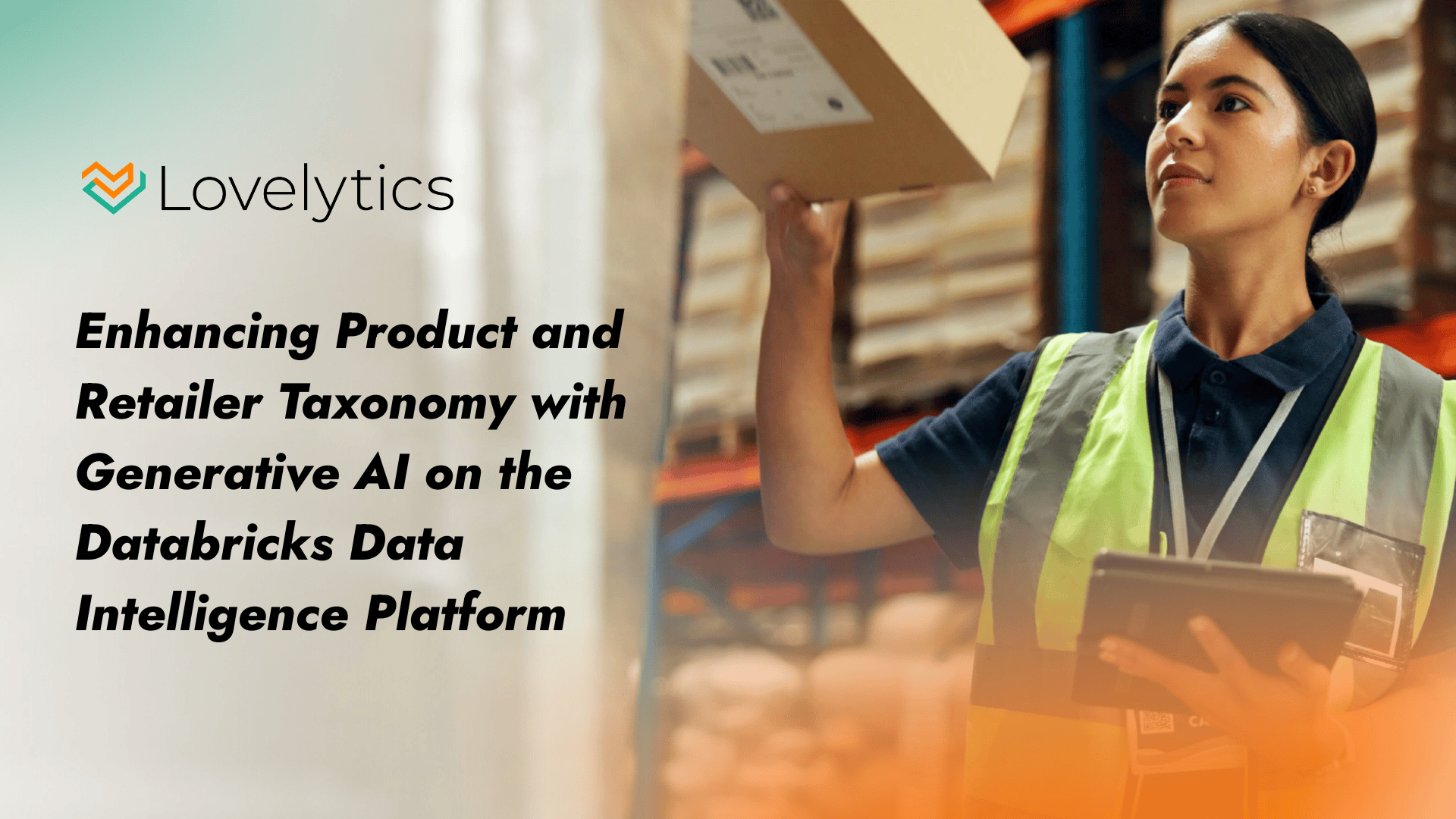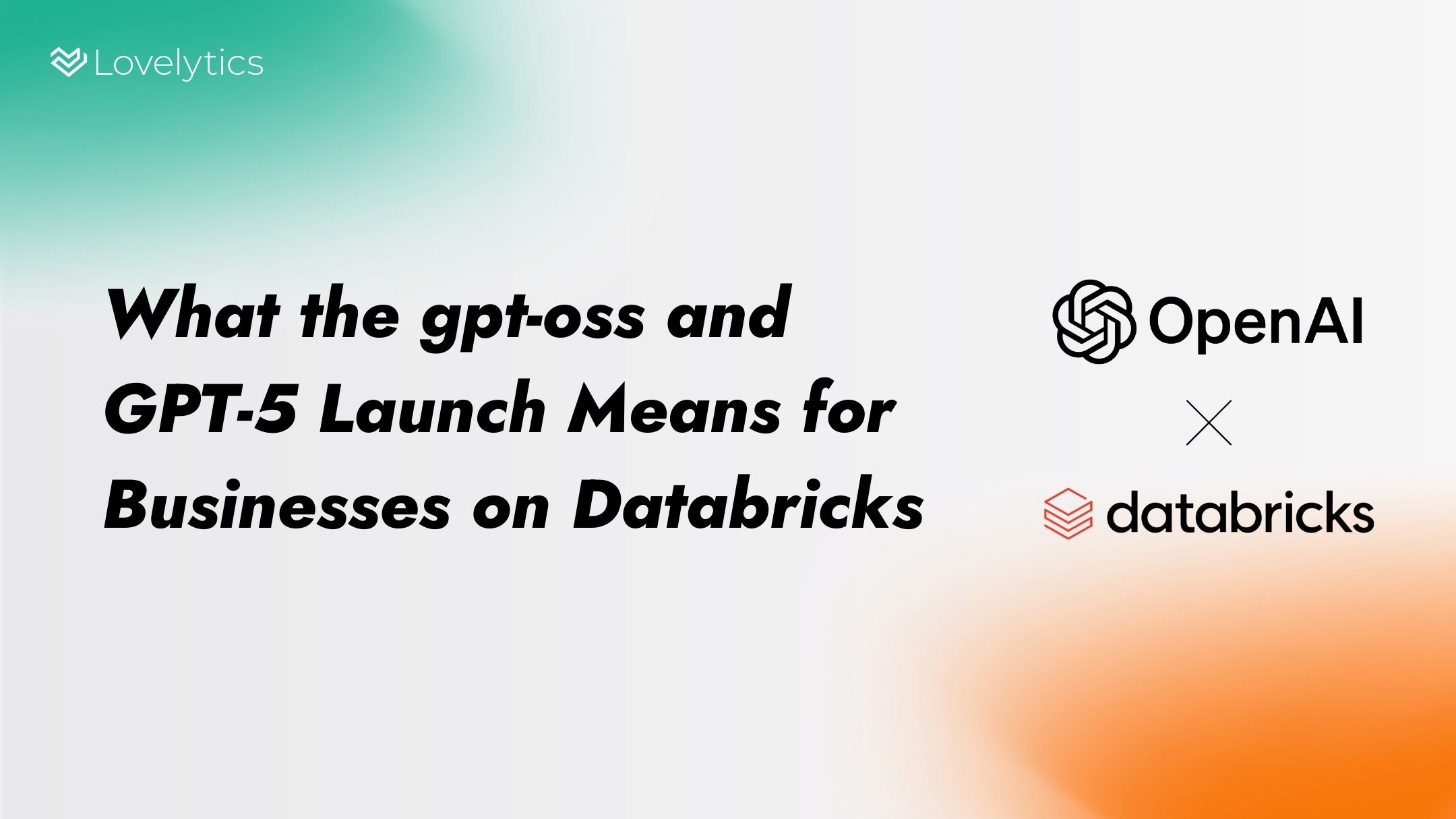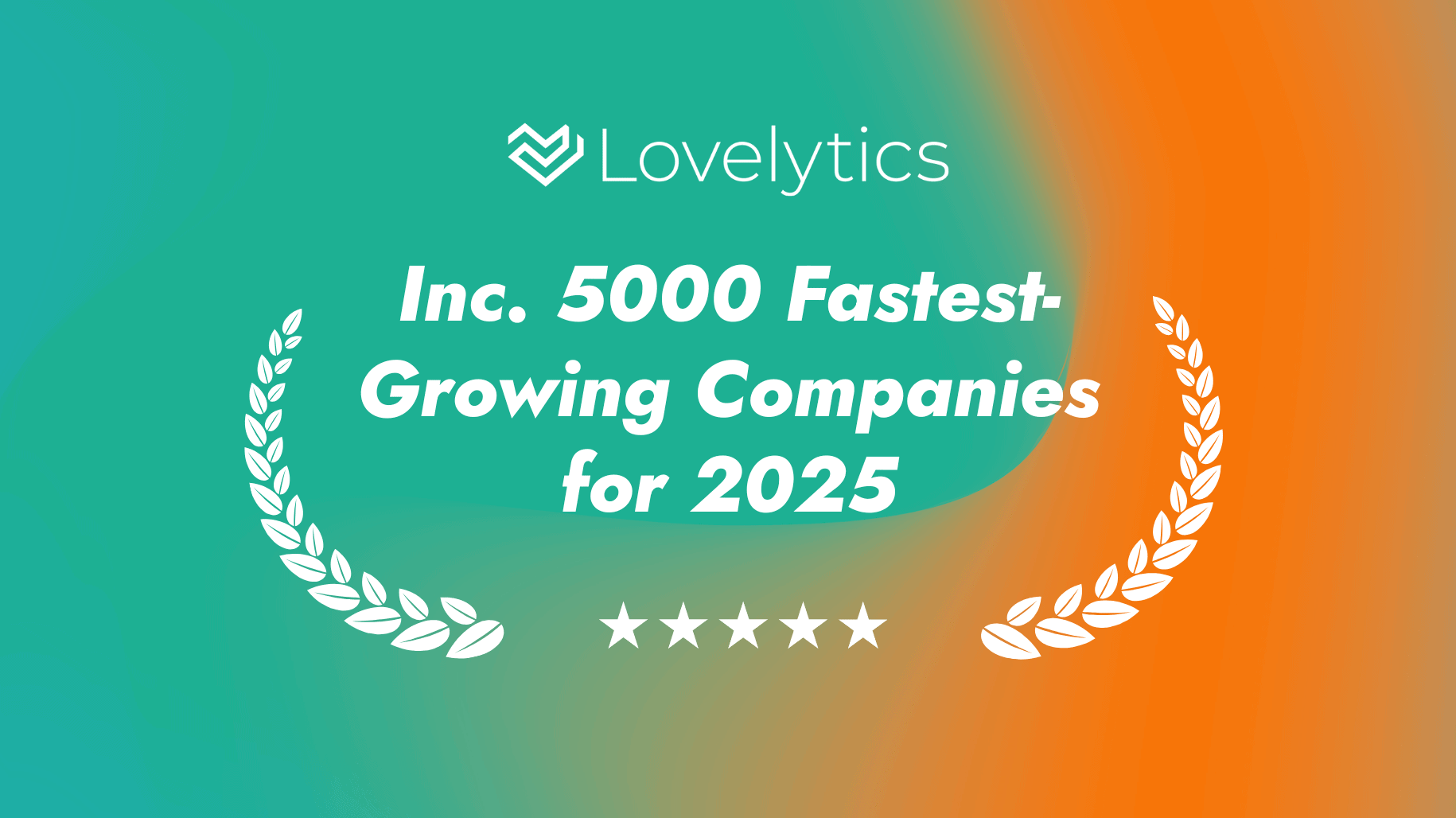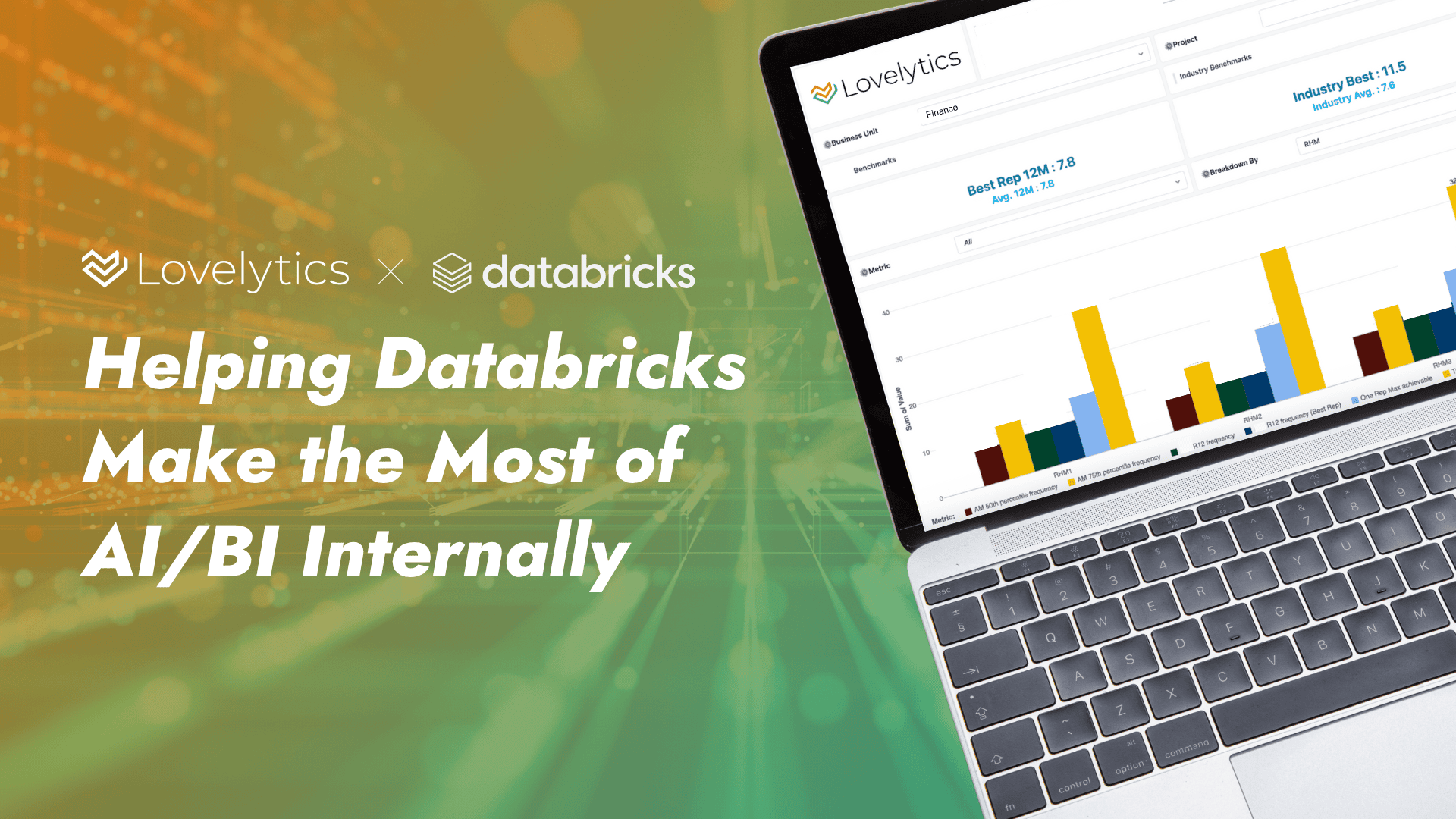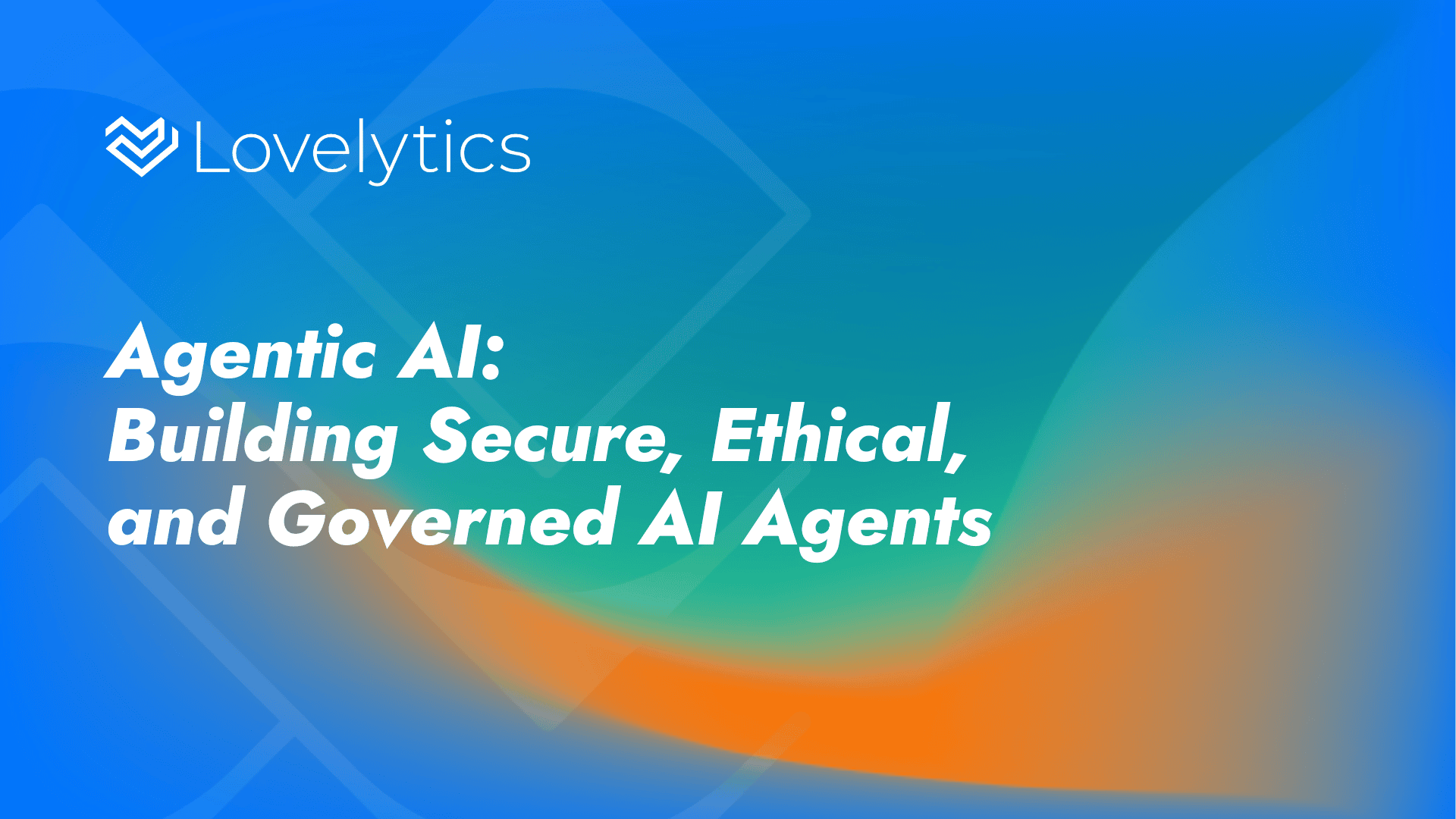The manufacturing sector is at the forefront of a transformative wave fueled by innovations in data, analytics, machine learning (ML), and generative AI (GenAI). These cutting-edge technologies are revolutionizing operational workflows, product quality enhancement, customer engagement, and competitive positioning. This paper discusses some of these emerging technology trends, integrating research insights as well as industry publications such as Manufacturing Business Technology and IndustryWeek, and validating those trends with what Lovelytics and Databricks are seeing in boots-on-the-ground projects. 2025 will see significant disruption and innovation in the manufacturing industry driven by continued supply chain disruptions, labor shortages, sustainability pressures, and economic and regulatory uncertainty. The Databricks Data Intelligence Platform is playing a major role in helping the manufacturing industry build solutions to address these complex challenges in 2025 and beyond.
Connected Products and Internet of Things (IOT)
Revolutionizing Product and Service Lifecycle Management
Connected products produce an unparalleled volume of data, offering critical insights into product performance, customer interaction patterns, and proactive maintenance. According to McKinsey, companies that invest in connected technologies can achieve a 20-25% reduction in downtime and a significant improvement in customer satisfaction through enhanced service responsiveness.
- Quality Event Forensics: Advanced analytics applied to IoT sensor data enable rapid identification and resolution of quality issues. The Databricks Intelligence Platform facilitates the integration of production and sensor data, enabling swift diagnostic responses.
- Predictive Maintenance: ML algorithms deployed through Databricks ML runtime empower manufacturers to predict equipment failures, leading to operational continuity and significant reductions in downtime—a trend underscored in studies on smart factory advancements.
- Customer 360: Holistic customer profiling is achieved by consolidating disparate datasets. Databricks Delta Sharing ensures secure, collaborative data utilization, optimizing customer relationship management.
- Product Feature Usage Analytics: GenAI models implemented on Databricks enable detailed analysis of customer behavior to refine feature design and support engineering advancements.
- Warranty Cost Optimization: Databricks auto ML frameworks rapidly identify anomalies in warranty claims, facilitating cost reductions and reliability improvements.
- Predictive Field Service: Proactive field service management leverages real-time data streaming on Databricks, optimizing technician allocation and spare part logistics.
Industrial AI
Redefining Intelligent Operations
Industrial AI integrates data-driven intelligence into manufacturing workflows to enhance efficiency, reduce waste, and ensure compliance. McKinsey’s Global Institute predicts that by 2025, industrial AI could generate over $2 trillion in global economic value.
- Defect Detection: Computer vision powered by the Databricks Lakehouse enables precision defect identification, mitigating risks in production pipelines. IndustryWeek emphasizes this as a key component of next-gen manufacturing.
- Production Monitoring: Databricks structured streaming capabilities allow real-time surveillance of key performance indicators, accelerating anomaly response times.
- Dynamic Capacity Allocation: ML-driven predictive insights guide optimal resource distribution. Databricks ensures these models adapt seamlessly to fluctuating demand
- Safety Risk Identification: Databricks simplifies safety data integration, enabling predictive analytics that prioritize workplace safety interventions. This aligns with Manufacturing Business Technology’s focus on workplace risk mitigation through AI.
- Energy Efficiency: Analytical models executed on Databricks facilitate energy consumption optimization, aligning operational strategies with ESG objectives. McKinsey research shows that energy-efficient operations can cut costs by 10-15%.
End-to-End Supply Chain Visibility
Achieving Transparent and Agile Supply Chains
Supply chain transparency enables manufacturers to mitigate disruptions, streamline operations, and enhance sustainability metrics – making real-time data integration a critical need to maintain resilience.
- Integrated Business Planning: Databricks unified data architecture facilitates comprehensive planning across supply chain and financial systems.
- Order Processing Automation: GenAI applied through Databricks automates document processing workflows, significantly reducing manual intervention and errors.
- Inventory Management: Predictive models implemented on Databricks ensure real-time inventory optimization, minimizing stock-outs and excess inventory. McKinsey emphasizes inventory agility as a cornerstone of resilient supply chains.
- Logistics Control Tower: IoT data streams integrated into Databricks provide centralized oversight of logistics, enabling responsive decision-making as a critical enabler of just-in-time delivery.
- Pricing Analytics: Advanced pricing strategies are powered by real-time market and historical data analysis on Databricks, enhancing competitive positioning.
- Environmental, Social, Governance (ESG): The Databricks Lakehouse supports comprehensive ESG data integration, facilitating transparent compliance reporting and sustainability initiatives, and marks ESG as a key differentiator in manufacturing competitiveness.
Engineering & R&D Transformation
Driving Innovation and Competitive Differentiation
Through advanced analytics and GenAI, R&D functions are evolving to enable rapid innovation and robust regulatory adherence. Boston Consulting Group’s research underscores the importance of integrating AI to reduce time-to-market for new products.
- Design Space Exploration: Databricks integrates computational design frameworks, expediting multi-scenario simulations for product innovation.
- Production Performance Optimization: Databricks robust platform enables performance analytics at scale, ensuring factory-level efficiency gains.
- Proprietary Coding Assistants: Databricks GenAI supports the creation of domain-specific coding tools, enhancing software engineering workflows.
- Pre-Competitive Research: Securely share insights within the industry using Databricks Delta Sharing, fostering collaboration while safeguarding proprietary data.
- Field Issue Triaging: Predictive analytics deployed on Databricks streamline issue resolution, enhancing post-sale service efficiency.
- Regulatory Risk Identification: Databricks data governance tools ensure rigorous compliance with evolving regulatory standards, a key area identified by IndustryWeek in mitigating product launch delays.
Other Trends That We Are Tracking
Reshoring and Regionalization
- To mitigate geopolitical risks, manufacturers are localizing production operations. Databricks advanced analytics enable granular assessments of regional performance. McKinsey’s 2024 reshoring insights highlight this as a key driver of operational resilience.
- Geopolitical tensions, such as U.S.-China trade disputes and the ongoing Ukraine conflict, are prompting manufacturers to reassess their global supply chains and focus on the role of regional hubs in maintaining supply chain stability amidst economic sanctions and trade restrictions.
Sustainability and ESG Goals
- Sustainability remains pivotal. The Databricks Lakehouse’s ESG capabilities empower organizations to track and optimize their environmental and governance metrics.
- The European Union’s Corporate Sustainability Reporting Directive (CSRD) set to take effect in 2025 will require stricter ESG disclosures, compelling manufacturers to enhance sustainability reporting frameworks.
AI Democratization
- Empowering non-technical stakeholders through accessible AI tools, Databricks democratizes ML and GenAI, driving organization-wide innovation. Boston Consulting Group identifies this as a critical enabler of workforce transformation.
- Rising global competition for AI talent, particularly between North America and Asia, underscores the need for scalable AI platforms like Databricks to bridge the skills gap and support workforce empowerment.
Cybersecurity
- Enhanced connectivity requires robust data security. The Databricks Lakehouse’s end-to-end architecture ensures data protection and governance. IndustryWeek warns of escalating cybersecurity threats in connected manufacturing ecosystems.
- Geopolitical events, such as state-sponsored cyberattacks, are increasingly targeting critical manufacturing infrastructure. McKinsey’s cybersecurity outlook highlights the necessity of resilient data governance systems.
Operational Excellence and Innovation in Manufacturing
By leveraging the capabilities of the Databricks Data Intelligence Platform, manufacturers can harness transformative solutions to drive efficiencies, gain actionable insights, and enhance operational capabilities. This enables them to achieve unparalleled operational excellence, drive innovative growth, and secure sustainable competitive advantages in the rapidly evolving manufacturing landscape of 2025 and beyond.
At the forefront of data, advanced analytics, and AI, Lovelytics partners with manufacturers to optimize production efficiency, enhance operational visibility, and drive product innovation. With deep industry expertise and technical knowledge, we have enabled leading manufacturers—including Fortune 500 companies—to achieve data modernization and transform their analytics outcomes. By integrating the power of Databricks with our tailored solutions, manufacturers can confidently navigate complexities, unlock new opportunities, and thrive in the competitive landscape of the future.
Partner with Lovelytics today to maximize efficiency, boost innovation, and give you the competitive edge you deserve. Contact us today.




